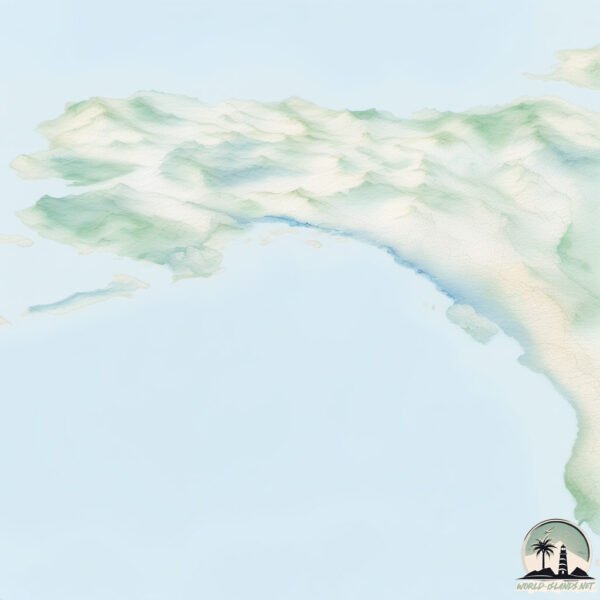Welcome to Nelson , a Continental island in the Bering Sea, part of the majestic Pacific Ocean. This guide offers a comprehensive overview of what makes Nelson unique – from its geography and climate to its population, infrastructure, and beyond. Dive into the details:
Geography and size of Nelson
Size: 2281 km²Coastline: 606 kmOcean: Pacific OceanSea: Bering SeaContinent: North America
Nelson is a Very Large Island spanning 2281 km² with a coastline of 606 km.
Archipel: Inside Passage Islands – A series of islands along the Pacific Northwest coast of North America, known for their stunning coastal landscapes and rich wildlife.
Tectonic Plate: North America – Covers North America and parts of the Atlantic and Arctic Oceans, characterized by diverse geological features and varying levels of seismic activity.
The geographic heart of the island is pinpointed at these coordinates:
Climate and weather of Nelson
Climate Zone: ContinentalClimate Details: Subarctic ClimateTemperature: Cold Summer
Climate Characteristics: Characterized by long, extremely cold winters and short, cool summers, often found in northern latitudes of North America and Eurasia.
Topography and nature of Nelson
Timezone: UTC-09:00Timezone places: America/AnchorageMax. Elevation: 434 m Mean Elevation: 71 mVegetation: Herbaceous CoverTree Coverage: 22%
The mean elevation is 71 m. The highest elevation on the island reaches approximately 434 meters above sea level. The island is characterized by Hills: Gently sloping landforms with rounded tops, having a maximum elevation between 200 and 500 meters. Hills contribute to a varied landscape on islands.
Dominating Vegetation: Herbaceous Cover
Vegetation: 10 vegetation zones – Very Highly Diverse Island
Infrastructure and Travelling to Nelson
Does the island have a public airport? yes .
Does the island have a major port? no .
The mean population of Nelson is 0 per km². Nelson is Uninhabited. The island belongs to United States of America .
Continuing your journey, Texada is the next notable island, situated merely km away.
Nelson Island Tour
With Indian Arrival Day being celebrated tomorrow, Monday - The National Trust invited the media to take a walk down memory ...
Nelson Island Tour
With Indian Arrival Day being celebrated tomorrow, Monday - The ...
With Indian Arrival Day being celebrated tomorrow, Monday - The National Trust invited the media to take a walk down memory ...
Nelson Island Now A Sustainable Eco-Development site
Nelson Island has been made a sustainable Eco-Development site. This ...
Nelson Island has been made a sustainable Eco-Development site. This was successfully done by the National Trust through the ...
4355 Blind Bay, Nelson Island BC
Real Estate Video.
Real Estate Video.
United States of America is classified as Developed region: G7: Group of Seven – Major advanced economies, including Canada, France, Germany, Italy, Japan, the United Kingdom, and the United States. The level of income is High income: OECD.
News – Latest Updates and Headlines from Nelson
Stay informed with the most recent news and important headlines from Nelson. Here’s a roundup of the latest developments.
Loading...
Social Media Posts about Nelson
Loading...
Please note: The data used here has been primarily extracted from satellite readings. Deviations from exact values may occur, particularly regarding the height of elevations and population density. Land area and coastline measurements refer to average values at mean high tide.

